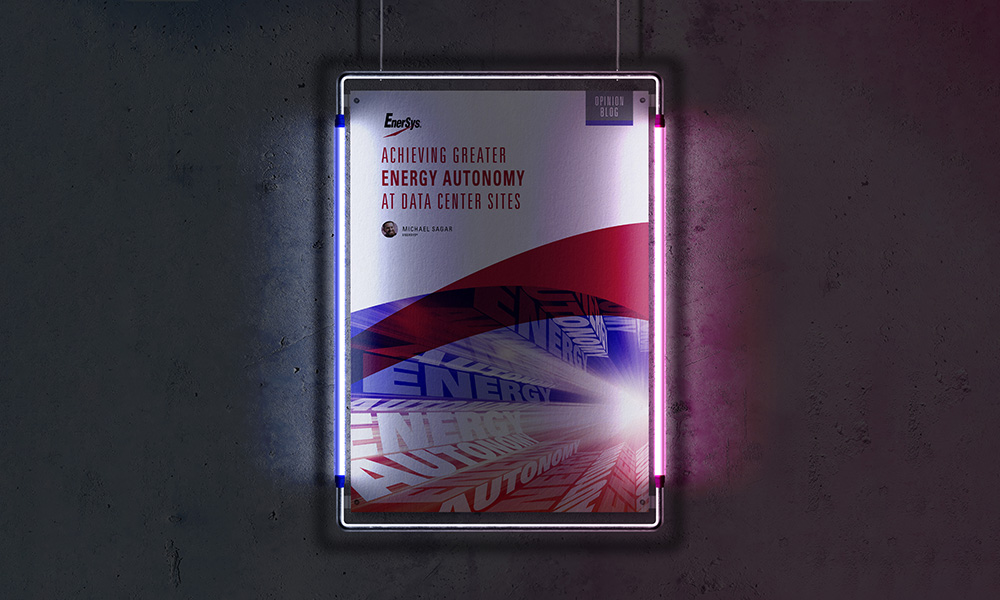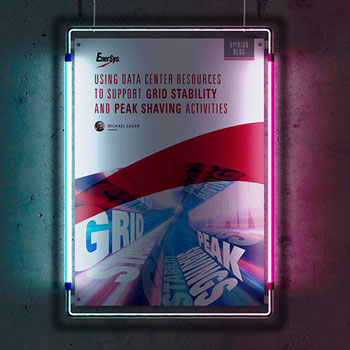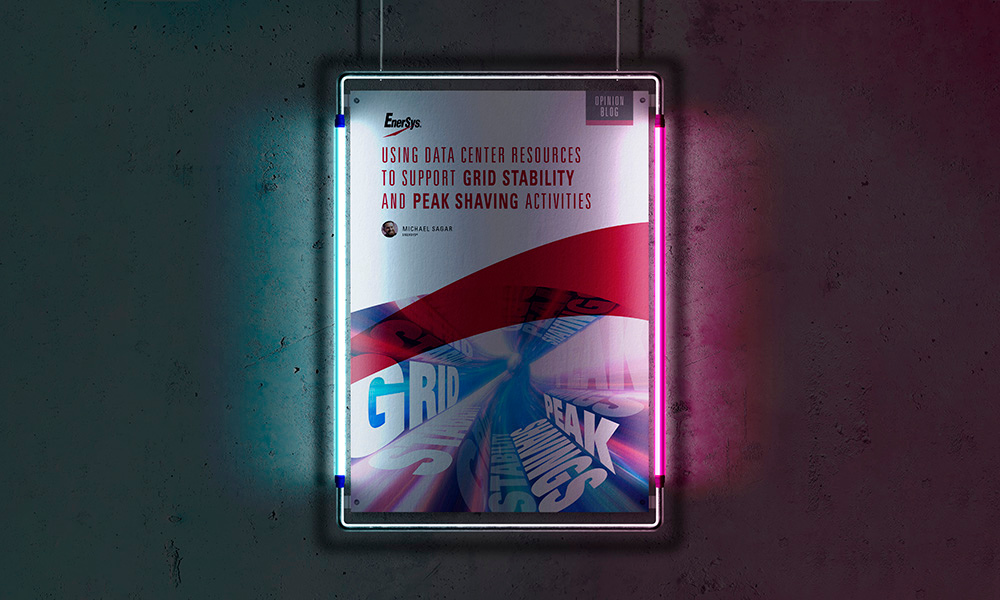Achieving greater energy autonomy at data center site

The International Energy Agency (IEA) estimates that data centers and their supporting transmission networks consumed over 200 Terawatt-hours (TWh) of electricity in 2020 and that the annual figure will reach 250 TWh in 20221. When combined, this means data center operations continue to represent approximately 1% of global electricity usage.
With many leading data center operators trying to attain carbon neutrality, they need to explore more sustainable ways of keeping up with their ever-increasing energy demands. A vitally important parameter for data center operations is their Power Usage Effectiveness (PUE), which quantifies how much of a data center’s total electricity consumption is utilized by its data storage and processing activities (as opposed to the electricity usage of the facility as a whole). Many high-profile players in the data center sector have set ambitious roadmaps to keep improving their PUE figures in the years ahead. Most of them also make considerable use of Power Purchasing Agreements (PPAs). These long-term commercial contracts allow operators to counterbalance their consumption by buying up massive quantities of renewable energy at a fixed price.
WITH MANY LEADING DATA CENTER OPERATORS TRYING TO ATTAIN CARBON NEUTRALITY, THEY NEED TO EXPLORE MORE SUSTAINABLE WAYS OF KEEPING UP WITH THEIR EVER-INCREASING ENERGY DEMANDS.
Going beyond PPAS
Though PPAs are helping to bring greater revenue to renewable energy providers (who can then make further investments to ramp up their generation capacity), data center operators cannot directly address the extremely great electricity demands of their facilities in a sustainable way using this method. This is because operators will still be taking energy from a grid that has both fossil fuel and renewable-based generation sites connected to it, with electricity being drawn when the input for these renewables is low and unlikely to come from them.
Having access to locally situated renewable energy generation capabilities, along with the battery resources to subsequently store energy generated for later use, would be highly advantageous to data centers. It would mean that they could rely on renewable-generated electricity around the clock. to it, with electricity being drawn when the input for these renewables is low and unlikely to come from them.
THOUGH PPAS ARE HELPING TO BRING GREATER REVENUE TO RENEWABLE ENERGY PROVIDERS, DATA CENTER OPERATORS CANNOT DIRECTLY ADDRESS THE EXTREMELY GREAT ELECTRICITY DEMANDS OF THEIR FACILITIES IN A SUSTAINABLE WAY USING THIS METHOD.
Pilot stages
An increasing number of data center operators are now assessing the feasibility of covering at least part of their overall power budget using on-site renewable energy infrastructure (such as photovoltaic panels on the roof). So far, the majority have only used these tactics to deal with their ancillary demands (such as the lighting and heating of offices and communal areas). Though this will help improve their PUE figure, there is considerable opportunity to go even further. Indeed, there are expectations that on-site renewable electricity generation will cover a much greater percentage of these facilities’ overall power requirements.
The prospect of renewably powered data centers
The hyperscale data center sites now being constructed take up hundreds of thousands of square meters - with the largest fully-operational one currently (located in Prineville, Oregon) covering more than 344,000 square meters (3.7 million square feet)2. Examples like this give plenty of scope for having photovoltaics installed on the roofs of buildings. In other cases, data center operators will choose to build new facilities close to existing renewable energy plants (or partner with renewable providers on joint construction ventures).
Pilot projects have already been initiated, with Facebook establishing a data center (in Georgia, USA) that draws energy from its on-site 107 Megawatt (MW) solar farm3. In 2020, Telia followed suit by bringing a fully solar-powered data center (based in Estonia) online4. In addition, both Google5 and Apple6 have worked with local solar energy providers to build solar plants that will help cover the needs of the nearby data center operations.
Supporting energy storage technology
Though some operators have already been using on-site renewable energy generation for powering non-essential functions, the promise of greater energy autonomy is certain to make this approach more appealing over the next decade. In addition, by selecting batteries that exhibit strong charge/ recharge performance, data centers will be better placed to implement advanced power solutions that leverage their renewable energy generation capabilities.
EnerSys® is acknowledged as a valued advisor to the leading companies in the data center industry when it comes to defining their battery backup infrastructure. Utilizing proprietary Thin Plate Pure Lead (TPPL) technology has meant that the operational characteristics associated with conventional lead-acid battery units have been accentuated. The upshot of this is that uninterruptible power supply (UPS) batteries with elevated energy densities, enhanced charge cycle durability, long service life, resilience to high temperatures, and greater cost-effectiveness can be realized.
UTILIZING PROPRIETARY THIN PLATE PURE LEAD (TPPL) TECHNOLOGY HAS MEANT THAT THE OPERATIONAL CHARACTERISTICS ASSOCIATED WITH CONVENTIONAL LEAD-ACID BATTERY UNITS HAVE BEEN ACCENTUATED.
Assuming IEA projections are proved right, by 2040 solar-based generation will be responsible for over 7,200 TWh of power output7 annually. Data center operators have the opportunity to lead by example. On-site electricity generation via renewables could represent a step-change for these operators. Through this, they will go beyond their current focus on PPAs and strive to achieve complete carbon neutrality.
Download Article
REFERENCES
- IEA - Data Centres and Data Transmission Networks Tracking Report (November 2021).
- Data Center Dynamics - In Search Of The World’s Largest Data Center (May 2022).
- Data Center Dynamics - New Solar Farm Planned for Facebook’s Data Center Campus (November 2019).
- Power Engineering International - Estonia Opens First Solar-Powered Data Centre (July 2020).
- Data Center Dynamics - Google’s Nevada Data Center to be Powered by Billion-Dollar Solar Farm (January 2020).
- Data Center Knowledge - Apple to Build Huge Solar Project to Power Reno Data Center Campus (January 2017).
- IEA - World Energy Outlook (November 2019).
Caution Concerning Forward-Looking Statements
EnerSys is making this statement in order to satisfy the “Safe Harbor” provision contained in the Private Securities Litigation Reform Act of 1995. Any of the statements contained in this article that are not statements of historical fact may include forward-looking statements that involve a number of risks and uncertainties. A forward-looking statement predicts, projects, or uses future events as expectations or possibilities. Forward-looking statements may be based on expectations concerning future events and are subject to risks and uncertainties relating to operations and the economic environment, all of which are difficult to predict and many of which are beyond our control. For a discussion of such risks and uncertainties that could cause actual results to differ materially from those matters expressed in or implied by forward-looking statements, please see our risk factors as disclosed in the “Risk Factors” section of our annual report on Form 10-K for the most recently ended fiscal year. The statements in this article are made as of the date of this article, even if subsequently made available by EnerSys on its website or otherwise. EnerSys does not undertake any obligation to update or revise these statements to reflect events or circumstances occurring after the date of article.


